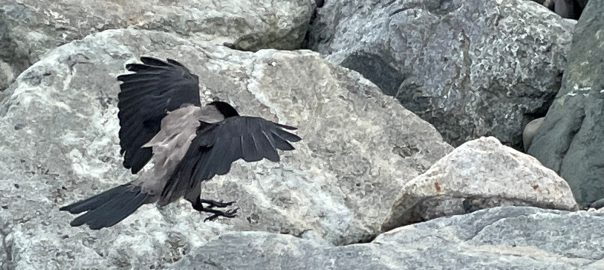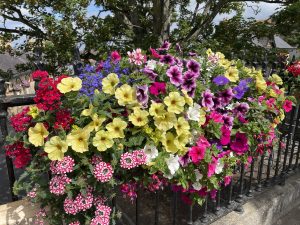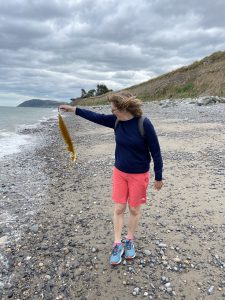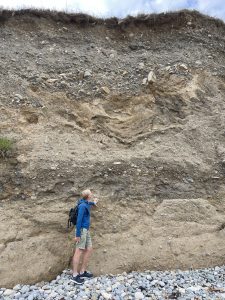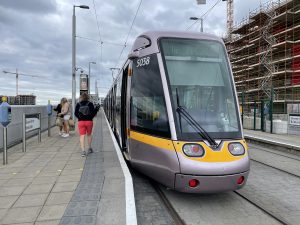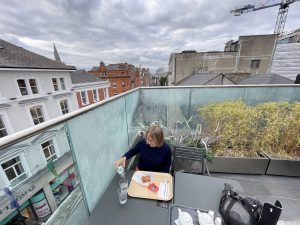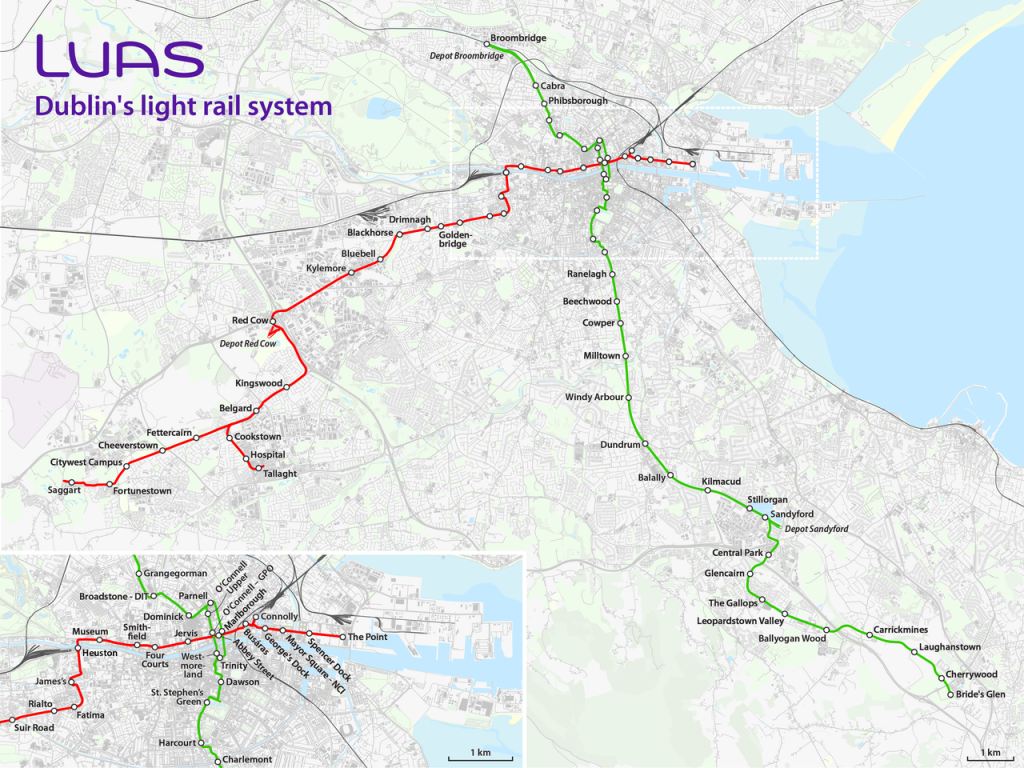Ireland day 0295. Wednesday 20 July 2022- GreenLine
| Today’s summary | After Val returned home from work at lunchtime, we took the DART down to Shankill then walked back along the shore to Bride’s Glen and caught the Green Line Luas and then DART back. Stopped in Dublin for a cup of tea on the way through. | ||||
| Today’s weather | Dry and overcast all day. Hardly any sun. Light northerly wind. About 19C | ||||
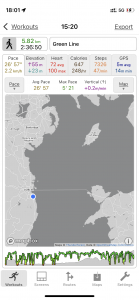 |
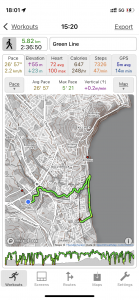 |
||||
| Today’s overview location (The blue mark shows the location of our route) |
Close-up location (The green line shows where we walked) (Click button below to download GPX of today’s walk as recorded, or see interactive map at bottom with elevations corrected): Shankill to Brides Glen and Green Line Luas |
||||
Commentary
Most of this week, Val has been working in the mornings up at the castle, then getting back at lunchtime. This arrangement actually works quite well as it allows me time to do the tidying up, make lunch and get the shopping in while she’s out. Then we have the whole afternoon and evening (as it still doesn’t get dark here until after 10pm) to go out exploring. So today followed this established pattern and we decided (well I have to admit I led the decision-making process to a slightly foregone conclusion) that we should spend the afternoon checking out the Luas green line.
Experienced readers of this blog will know that we (i.e. me) have a bit of an interest in railway related things and while we have explored quite a lot of the rail infrastructure in the Dublin area there was one big piece that we didn’t know anything about – the Luas green line. You can read a bit more about this particular facility in the caption to the photo below, but basically it is the whole north-south arm of the city’s Luas (tram) network and we had never even set foot in it. So I devised a walking tour which would link up a couple of places in south Dublin that I have got to quite like lately – Shankill and Killiney – and then give us the opportunity to catch the green line back into the inner city at the end.
So as soon as Val was back and had got changed (cool weather gear required again today, by the way, as the heatwave basically ended with the thunderstorm yesterday), we jumped on a DART and meandered our way down to Shankill. It’s only a short walk down from Shankill station to the coast, where there’s a steep set of steps that take you down to the shore itself. It’s a rocky pebbly shore, but nevertheless there were a few people out and about – and swimming – and generally enjoying the joy of the summer holidays. We walked a bit further north up the beach, almost to Killiney station, then stopped, found a sheltered spot out of the wind, and had our lunch.
I do like the beach here – it’s a bit quieter than Portmarnock and Malahide beaches, and feels less exposed. The only thing it hasn’t got going for it is sand – the pebbles are a bit hard underfoot – though great for skimming. So we didn’t rush our lunch, and enjoyed gazing out to sea, and up to the Killiney obelisk to our left.
Once we had finished our sandwiches, we set off inland to seek out Bride’s Glen Luas station. I should mention that by this point it was gone 5pm (yes really) – we really aren’t rapid movers if we don’t have to be. Though I did have to keep reminding myself that by this time in midwinter it will already have been dark for an hour. We will clearly need to start getting a bit more disciplined again once the equinox passes. Fortunately, that’s a good way off still.
Our walking route back to the station meandered through Loughlinstown and Cherrywood and there are some quite nice parks and green spaces along the way. So it’s a pleasant walk, though we were both a bit astounded by the amount of new building work going on at Cherrywood, and around the Bride’s Glen Luas station. There’s a brand new business park out there – hosting big names such as Accenture, Aviva and Abbott (they don’t all begin with “A”) as well as healthcare facilities and what looked like a university campus currently under construction. Business seems to be booming out there – or at least it was pre-pandemic. Today, even though it wasn’t even 6pm when we walked through, everywhere seemed pretty deserted.
We only had a few moments to wait for a tram, and we were soon on our way back into Dublin, to reflect on a successful and interesting walk, and another bit of the railway network successfully ticked off. We were going to head on straight back to Malahide but thought the better of it and went to the rooftop café in Marks and Spencer’s Grafton Street for a cup of tea (and, it has to be confessed, a sausage roll) before walking down to Tara street to catch a train for the final leg of the journey.
But before I sign off I should comment on the bird in the banner image at the top of this blog. It’s a hooded crow (Corvus cornix) and it is relatively widespread in Ireland. Despite being common here – and easily identified by its black wings and grey back – I don’t think I’d ever seen it in England. In fact if you research it a bit more, you find that the bird is endemic in Ireland, Scotland, Scandinavia and in Europe from Italy northwards.
However in England, France, Spain and Benelux, it is replaced by the carrion crow (Corvus corone), which is morphologically almost identical except that it is all black. Genetically, too, the two species are practically identical apart from one very short segment in one part of one chromosome in the hooded crow. Expression of genes in this segment – which is in fact where the genes for the black plumage on a crow’s back are located – is somehow blocked. So the black colour isn’t expressed and the feathers in this region stay grey.
The two species could interbreed, but rarely do, each presumably preferring mates that look like them. Hence the very clear demarcation lines between the two species. It is thought that they diverged during one or more of the ice ages, when representatives of what was once a single parent population were separated on different sides of an ice-sheet and started to evolve away from each other.
And finally – if you have difficulties distinguishing your corvids, just remember – a crow in a crowd is a rook.
Today’s photos (click to enlarge)
Interactive map
(Elevations corrected at GPS Visualizer: Assign DEM elevation data to coordinates )
Max elevation: 48 m
Min elevation: 0 m
Total climbing: 115 m
Total descent: -86 m
Total time: 02:36:49
